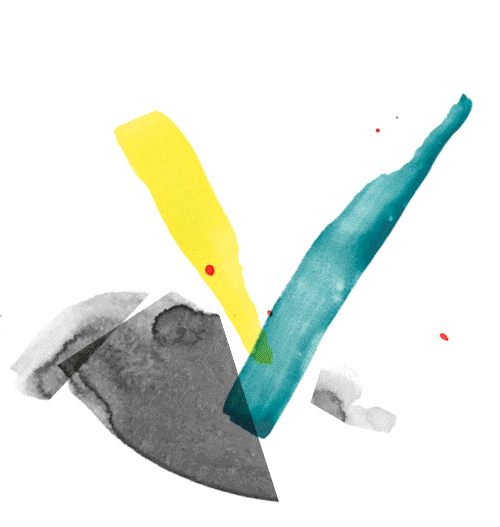

Sign up for our newsletters. You can change the settings or unsubscribe at any time.
Thank you for your subscription. We have sent you an e-mail with a confirmation link.


exp. 1
exp. 2
exp. 3

Käthe Kollwitz
Venue: Gropius Bau
Was also part of: exp. 1
Käthe Kollwitz
Born 1867 in Königsberg (now Kaliningrad, RU) – died 1945 in Moritzburg, DE
An iconic German modernist artist who made drawings, prints, and sculptures, Käthe Kollwitz (1867–1945) distinguished herself in a male-dominated art world by articulating the particular experience of women in the class struggle and during wartime. Her best-known cycles, Ein Weberaufstand [A Weavers’ Revolt, 1893–97] and Bauernkrieg [Peasants’ War, 1902–08], depict popular uprisings that took place during the artist’s lifetime—an acknowledgement of the continued social injustice she observed all around her and a plea for its rectification. Female protagonists figure prominently in both cycles—for example, the Schwarze Hofmännin (Black Anna), a peasant woman credited in historical accounts for inciting revolt in her village of Heilbronn during the German Peasants’ War (1525). Likewise, Die Carmagnole [The Carmagnole, 1901], based on a passage from the Charles Dickens novel A Tale of Two Cities, depicts the revolutionary fervor of a mostly female crowd, while Die Mütter [The Mothers, 1922/23], from the Krieg [War 1918–22/23] series, shows a group of women huddled around their children, their bodies locked in solidarity, forming a sculptural mass, a protective shield.
Kollwitz’s inclusion in this edition of the Berlin Biennale derives from the curatorial team’s research into the Clube dos Artistas Modernos (CAM, Club of Modern Artists), the São Paulo exhibition space founded in 1933 by Flávio de Carvalho. Expressing solidarity with Kollwitz after she was expelled from the Akademie der Künste in 1933 for publicly resisting the Nazis’ rise to power, the CAM organized a retrospective that same year featuring eighty-four prints. In an essay accompanying the exhibition, the seminal Brazilian critic Mário Pedrosa celebrated Kollwitz’s work for engaging with social and political issues rather than merely aesthetic ones. Today, artistic responses such as Kollwitz’s to social injustice and the threat of fascism are as urgent as ever, given the current resurgence of right-wing nationalism across the globe.
Michèle Faguet
Teatro da Vertigem
Monograph
A World Without Bones
Agustín Pérez Rubio
El primer nueva corónica y buen gobierno
Felipe Guamán Poma de Ayala
Chronicle
Being in Crisis together – Einander in Krisen begegnen
Feminist Health Care Research Group (Inga Zimprich/Julia Bonn)
Online workshop
Flávio de Carvalho: Fazenda Capuava
Archive of Lisette Lagnado
Photographs
Fragments of the Artist’s Diary, Berlin 11.2019–1.2020
Virginia de Medeiros
Diary
By using this website you agree to the use of cookies in accordance with our data privacy policy.

Käthe Kollwitz
Venue: Gropius Bau
Was also part of: exp. 1
Käthe Kollwitz
Born 1867 in Königsberg (now Kaliningrad, RU) – died 1945 in Moritzburg, DE
An iconic German modernist artist who made drawings, prints, and sculptures, Käthe Kollwitz (1867–1945) distinguished herself in a male-dominated art world by articulating the particular experience of women in the class struggle and during wartime. Her best-known cycles, Ein Weberaufstand [A Weavers’ Revolt, 1893–97] and Bauernkrieg [Peasants’ War, 1902–08], depict popular uprisings that took place during the artist’s lifetime—an acknowledgement of the continued social injustice she observed all around her and a plea for its rectification. Female protagonists figure prominently in both cycles—for example, the Schwarze Hofmännin (Black Anna), a peasant woman credited in historical accounts for inciting revolt in her village of Heilbronn during the German Peasants’ War (1525). Likewise, Die Carmagnole [The Carmagnole, 1901], based on a passage from the Charles Dickens novel A Tale of Two Cities, depicts the revolutionary fervor of a mostly female crowd, while Die Mütter [The Mothers, 1922/23], from the Krieg [War 1918–22/23] series, shows a group of women huddled around their children, their bodies locked in solidarity, forming a sculptural mass, a protective shield.
Kollwitz’s inclusion in this edition of the Berlin Biennale derives from the curatorial team’s research into the Clube dos Artistas Modernos (CAM, Club of Modern Artists), the São Paulo exhibition space founded in 1933 by Flávio de Carvalho. Expressing solidarity with Kollwitz after she was expelled from the Akademie der Künste in 1933 for publicly resisting the Nazis’ rise to power, the CAM organized a retrospective that same year featuring eighty-four prints. In an essay accompanying the exhibition, the seminal Brazilian critic Mário Pedrosa celebrated Kollwitz’s work for engaging with social and political issues rather than merely aesthetic ones. Today, artistic responses such as Kollwitz’s to social injustice and the threat of fascism are as urgent as ever, given the current resurgence of right-wing nationalism across the globe.
Michèle Faguet
By using this website you agree to the use of cookies in accordance with our data privacy policy.

Käthe Kollwitz
Venue: Gropius Bau
Was also part of: exp. 1
Käthe Kollwitz
Born 1867 in Königsberg (now Kaliningrad, RU) – died 1945 in Moritzburg, DE
An iconic German modernist artist who made drawings, prints, and sculptures, Käthe Kollwitz (1867–1945) distinguished herself in a male-dominated art world by articulating the particular experience of women in the class struggle and during wartime. Her best-known cycles, Ein Weberaufstand [A Weavers’ Revolt, 1893–97] and Bauernkrieg [Peasants’ War, 1902–08], depict popular uprisings that took place during the artist’s lifetime—an acknowledgement of the continued social injustice she observed all around her and a plea for its rectification. Female protagonists figure prominently in both cycles—for example, the Schwarze Hofmännin (Black Anna), a peasant woman credited in historical accounts for inciting revolt in her village of Heilbronn during the German Peasants’ War (1525). Likewise, Die Carmagnole [The Carmagnole, 1901], based on a passage from the Charles Dickens novel A Tale of Two Cities, depicts the revolutionary fervor of a mostly female crowd, while Die Mütter [The Mothers, 1922/23], from the Krieg [War 1918–22/23] series, shows a group of women huddled around their children, their bodies locked in solidarity, forming a sculptural mass, a protective shield.
Kollwitz’s inclusion in this edition of the Berlin Biennale derives from the curatorial team’s research into the Clube dos Artistas Modernos (CAM, Club of Modern Artists), the São Paulo exhibition space founded in 1933 by Flávio de Carvalho. Expressing solidarity with Kollwitz after she was expelled from the Akademie der Künste in 1933 for publicly resisting the Nazis’ rise to power, the CAM organized a retrospective that same year featuring eighty-four prints. In an essay accompanying the exhibition, the seminal Brazilian critic Mário Pedrosa celebrated Kollwitz’s work for engaging with social and political issues rather than merely aesthetic ones. Today, artistic responses such as Kollwitz’s to social injustice and the threat of fascism are as urgent as ever, given the current resurgence of right-wing nationalism across the globe.
Michèle Faguet
Fragments of the Artist’s Diary, Berlin 11.2019–1.2020
Virginia de Medeiros
Diary
Struggle as Culture: The Museum of Solidarity, 1971–73
María Berríos
Essay
Hatred Among Us
Lisette Lagnado
Essay
Memorial to the Sinti and Roma Victims of National Socialism
Dani Karavan
Memorial
COVID-19 VIDEOS
Carlos Motta
Video
Feminist Health Care Research Group
Web archive
By using this website you agree to the use of cookies in accordance with our data privacy policy.

Käthe Kollwitz
Venue: Gropius Bau
Was also part of: exp. 1
Käthe Kollwitz
Born 1867 in Königsberg (now Kaliningrad, RU) – died 1945 in Moritzburg, DE
An iconic German modernist artist who made drawings, prints, and sculptures, Käthe Kollwitz (1867–1945) distinguished herself in a male-dominated art world by articulating the particular experience of women in the class struggle and during wartime. Her best-known cycles, Ein Weberaufstand [A Weavers’ Revolt, 1893–97] and Bauernkrieg [Peasants’ War, 1902–08], depict popular uprisings that took place during the artist’s lifetime—an acknowledgement of the continued social injustice she observed all around her and a plea for its rectification. Female protagonists figure prominently in both cycles—for example, the Schwarze Hofmännin (Black Anna), a peasant woman credited in historical accounts for inciting revolt in her village of Heilbronn during the German Peasants’ War (1525). Likewise, Die Carmagnole [The Carmagnole, 1901], based on a passage from the Charles Dickens novel A Tale of Two Cities, depicts the revolutionary fervor of a mostly female crowd, while Die Mütter [The Mothers, 1922/23], from the Krieg [War 1918–22/23] series, shows a group of women huddled around their children, their bodies locked in solidarity, forming a sculptural mass, a protective shield.
Kollwitz’s inclusion in this edition of the Berlin Biennale derives from the curatorial team’s research into the Clube dos Artistas Modernos (CAM, Club of Modern Artists), the São Paulo exhibition space founded in 1933 by Flávio de Carvalho. Expressing solidarity with Kollwitz after she was expelled from the Akademie der Künste in 1933 for publicly resisting the Nazis’ rise to power, the CAM organized a retrospective that same year featuring eighty-four prints. In an essay accompanying the exhibition, the seminal Brazilian critic Mário Pedrosa celebrated Kollwitz’s work for engaging with social and political issues rather than merely aesthetic ones. Today, artistic responses such as Kollwitz’s to social injustice and the threat of fascism are as urgent as ever, given the current resurgence of right-wing nationalism across the globe.
Michèle Faguet
Expresiones de la locura: el arte de los enfermos mentales
Hans Prinzhorn
Monograph
Weaving Solidarity
Renata Cervetto and Duygu Örs
Q&A
II: La Solidaridad va Más Allá de un Concepto. Entre las Curadoras de la XI Berlin Biennale
Lisette Lagnado, Agustín Pérez Rubio
Conversation
III: La familia son quiénes se alegran con nuestros actos diarios. Detrás de las curadoras de la XI
María Berríos, Agustín Pérez Rubio
Conversation
Touching Feeling. Affect, Pedagogy, Performativity
Eve Kosofsky Sedgwick
Monograph
Hatred Among Us
Lisette Lagnado
Essay
By using this website you agree to the use of cookies in accordance with our data privacy policy.
By using this website you agree to the use of cookies in accordance with our data privacy policy.




